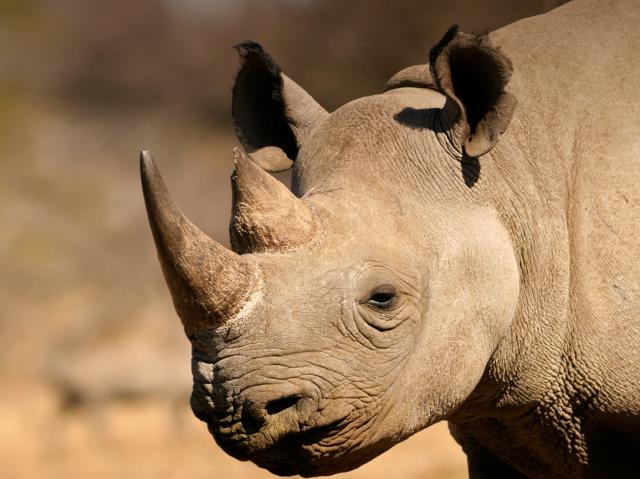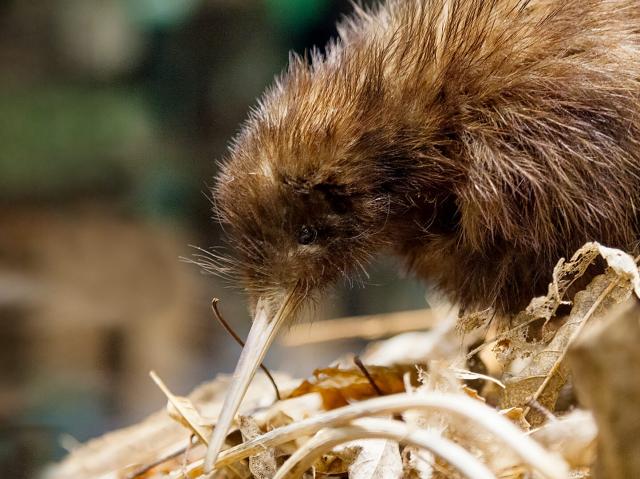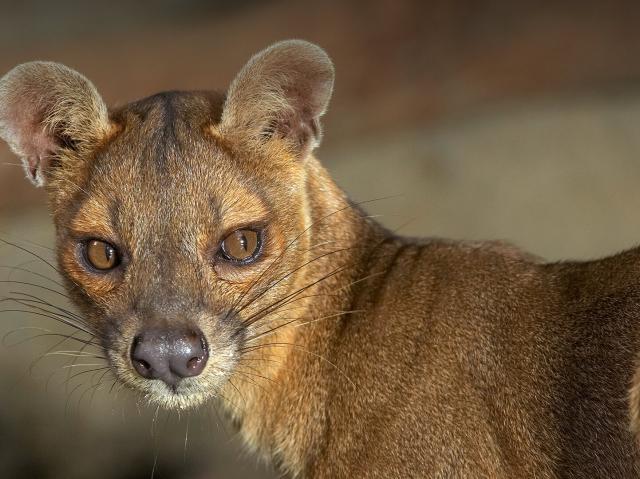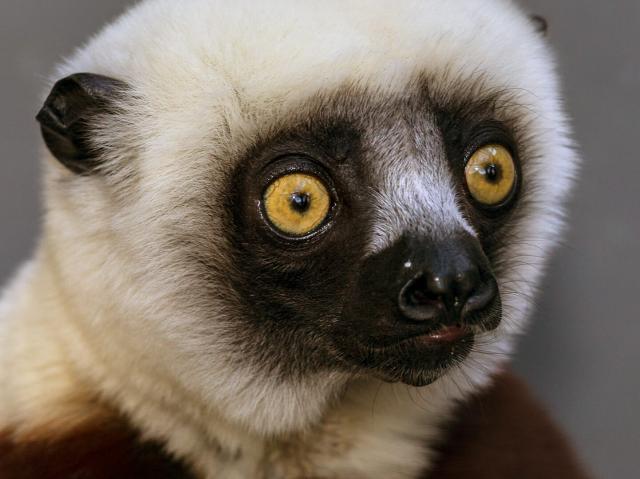
Goat and Sheep

- CLASS: Mammalia (Mammals)
- ORDER: Artiodactyla
- FAMILY: Bovidae
- SUBFAMILY: Antilopinae
- GENERA: 14
- SPECIES: 61

ABOUT
Living on the edge: Wild goats and sheep may not seem too exciting at first glance. But wait until you get to know them better: some wild goats can climb trees, and some goats and sheep can walk along a ledge not much wider than a tightrope! With their amazing climbing talent, spectacular spiraling horns, and ability to live in some of the world's steepest, most forbidding habitats, goats and sheep are worthy of our attention and appreciation.
How can you tell if you're looking at a goat or a sheep? If a male has the familiar beard, or goatee, then he's probably a goat; male sheep don't have beards. Another hint is the horns: a male sheep's horns usually curl, and a goat's are straight. But, of course, there are exceptions. Male Barbary sheep or aoudads look like a mixture of both: they have beards AND curled horns! And the scientific name for the beardless Himalayan tahr—Hemitragus jemlahicus—means "something like a goat."
Surefooted sheep and goats walk on two toes—the third and fourth—on each foot. Some have two or more vestigial toes called dewclaws. The bottom of each foot is very soft. This gives them the ability to climb on rocks with a secure foothold. Markhor are known for their tree-climbing ability, and those living at the San Diego Zoo Safari Park have even been seen walking along the top of a chain link fence, which is only a half-inch (1.2 centimeters) wide! Ibex and Barbary sheep can jump over 6 feet (1.8 meters) straight up from a standing position.
Both male and female goats and sheep have horns, but those of the males are much larger. The horns are made of keratin, like our fingernails, and they are permanent, growing throughout their lifetime. A growth ring is deposited each winter. By counting those rings, it's possible to tell the individual's age. In contrast, deer antlers are made of bone and are shed and regrown every year.
People have hunted wild goats and sheep for their hides and meat for many thousands of years. Ice Age cave drawings found in Europe depict what appear to be ibex. Over time, humans developed an association with goats and sheep and began domesticating them some 8,000 to 10,000 years ago in southwest Asia and the Middle East. There are now dozens of domesticated goat and sheep breeds, many bred to provide milk, fibers such as cashmere, mohair, and wool, and meat.
When you look at wild goats and sheep at the Zoo or Safari Park, you are seeing a living link to a remote past, as well as a vital part of our world today. Take time to admire their impressive stature and those amazing horns, and to appreciate their agility and toughness. They represent an important but often overlooked component of natural habitats.
HABITAT AND DIET
Hilly homes: Wild goats and sheep are native to Asia, the Middle East, Central Europe, and North America. Most, such as takins, serows, and tahrs, thrive in hilly, mountainous regions. Others, such as desert bighorn sheep and Nubian ibex, are at home in desert areas.
All goats and sheep are primarily grazers and ruminants—cud chewers, that is. A four-chambered stomach contains fermenting bacteria and protozoans that help break down the tough grasses and other plants they eat. While at rest, they bring food back up from the first stomach chamber and chew it, grinding it with their cheek teeth. Then they swallow their food a second time for more thorough digestion.
At the San Diego Zoo and the Safari Park, the sheep and goats are offered high-fiber herbivore pellets and grass hay.
FAMILY LIFE
Does and ewes (adult female goats and sheep) live in groups. Rams and bucks (male sheep and goats) live in small bachelor groups or alone, except during breeding season. The males use their horns in head-butting clashes that get more intense during the breeding season, which is in the fall for most types. Younger rams and bucks are eager to try their skills and may pick more fights, but robust older males with their bigger and stronger horns can win fairly quickly. The winner usually breeds with all the females in the flock or herd and fathers the young. The rest of the males return to the bachelor group or stay by themselves until the next breeding season, when the battles resume, and they get another chance to beat the former winner.
Most females give birth to a single kid (baby goat) or lamb (baby sheep) in the spring. Before giving birth, the mother looks for a quiet, safe location. Once the baby is strong enough to follow her, the pair joins other mothers and their babies. The youngsters become independent quickly. An ibex kid can jump on its first day of life, and it joins kid groups by the fourth week. Even at an early age, lambs and kids are agile and alert. Although they are weaned by four to six months of age, they remain with their mother for at least a year.
CONSERVATION
Unfortunately, some goats, including the endangered markhor Capra falconeri and some of the wild sheep, are still highly prized as trophy animals. Hunters often pay thousands of dollars to pursue and kill them for their horns. Many wild goats and sheep are hunted for their hide and meat, causing their numbers to drop, with some populations disappearing completely.
There are just over 950 Peninsular bighorn sheep Ovis canadensis nelsoni left in the US. Their current range is from the San Jacinto Mountains in Southern California to Baja California, Mexico. Bighorn sheep rams are wide ranging, moving between ewe groups and linking the subpopulations together. Human disturbances, development, several major highways, and the recently built fence along the US-Mexico border have compromised the ability for small subpopulations to connect for breeding.
After Peninsular bighorn sheep were listed as endangered, the U.S. Fish and Wildlife Service put together a team of bighorn sheep experts and asked them to create a plan for the sheep's recovery. The plan calls for a number of actions, including increased habitat protection and restoration, reduction of human impact, and development of public education programs. San Diego Zoo Wildlife Alliance conservation scientists are working with collaborators in Mexico collecting data, using camera traps, tracking bighorn sheep signs, and collecting fecal samples for genetic analysis.
By supporting San Diego Zoo Wildlife Alliance, you are our ally in saving and protecting wildlife worldwide.
Sounds
LIFE SPAN
6 to 24 years, depending on species
YOUNG
Gestation: 5 to 8 months, depending on species
Number of young at birth: Usually 1, sometimes 2, rarely 3
Age of maturity: 2 to 14 years, depending on species
SIZE
Length: Longest - musk ox Ovibos moschatus, 6.2 to 7.5 feet (1.9 to 2.3 meters); smallest - Burmese goral Naemorhedus griseus evansi, 20 to 27 inches (50 to 70 centimeters)
Height: Tallest - musk ox, 3.9 to 5 feet (1.2 to 1.5 meters); shortest - central Chinese goral Naemorhedus griseus, 20 to 27 inches (50 to 70 centimeters) tall at shoulder
Weight: Heaviest, musk ox, 440 to 903 pounds (200 to 410 kilograms); lightest, Arabian tahr Arabitragus jaykari female, 37 to 44 pounds (17 to 20 kilograms)
FUN FACTS
No kidding: when female goats (called does) give birth to babies, called kids, the process is called "kidding."
The musk ox wins the prize for the longest hair (apart from that of humans!). Its shaggy guard hairs can reach nearly 2 feet (60 centimeters) in length.
More people eat goat meat worldwide than any other kind of meat.
When the snow is too deep, the chamois has been known to survive for up to two weeks without food.










